For class, we read an article by Jane R. Forsyth titled Linking Geology and Botany… a new approach. She provided a very detailed description of the interdisciplinary study of geobotany, and how this applies to the variation in landscape and plant life in Ohio.
Ohio’s geology can be roughly evenly divided among western and eastern Ohio. The western portion is mainly atop a layer of limestone, which is not very resistant to erosion. Due to this, much of western Ohio has been eroded down to a more flat landscape. Eastern Ohio on the other hand is underlain by a more resistant rock, sandstone, which is itself underlain by shale. Sandstone is highly resistant to erosion due to the lengthy process of dissolving the cement holding it together. In areas where the shale is not capped by sandstone, deep valleys have been carved due to the exposure of the less resistant shale, leaving large sandstone hills.
The original sequence of sedimentary rock strata, from top to bottom, was limestone, shale, and sandstone. This sequence of rocks was gently tilted into a low arch due to tectonic pressures in the Earth that formed the Appalachian Mountains. The crest of this arch was in the east, where the top layers of sandstone and shale were gradually eroded away to give its limestone substrate, while the eastern part of Ohio maintained this top layer of sandstone due to the toe end of the arch protecting the deeper layers from erosion. This erosion was mainly due to the preglacial stream known as the Teays River, which was present in Ohio for around 200 million years. Its activity in eroding the land was curtailed by the advancement of Ice Age glaciers. When these glaciers finally arrived in Ohio, their advance was greatly hindered by the steep sandstone hills that were present in eastern Ohio. Below is a rough sketch of that glacial boundary, with the shaded region representing the glaciated area.
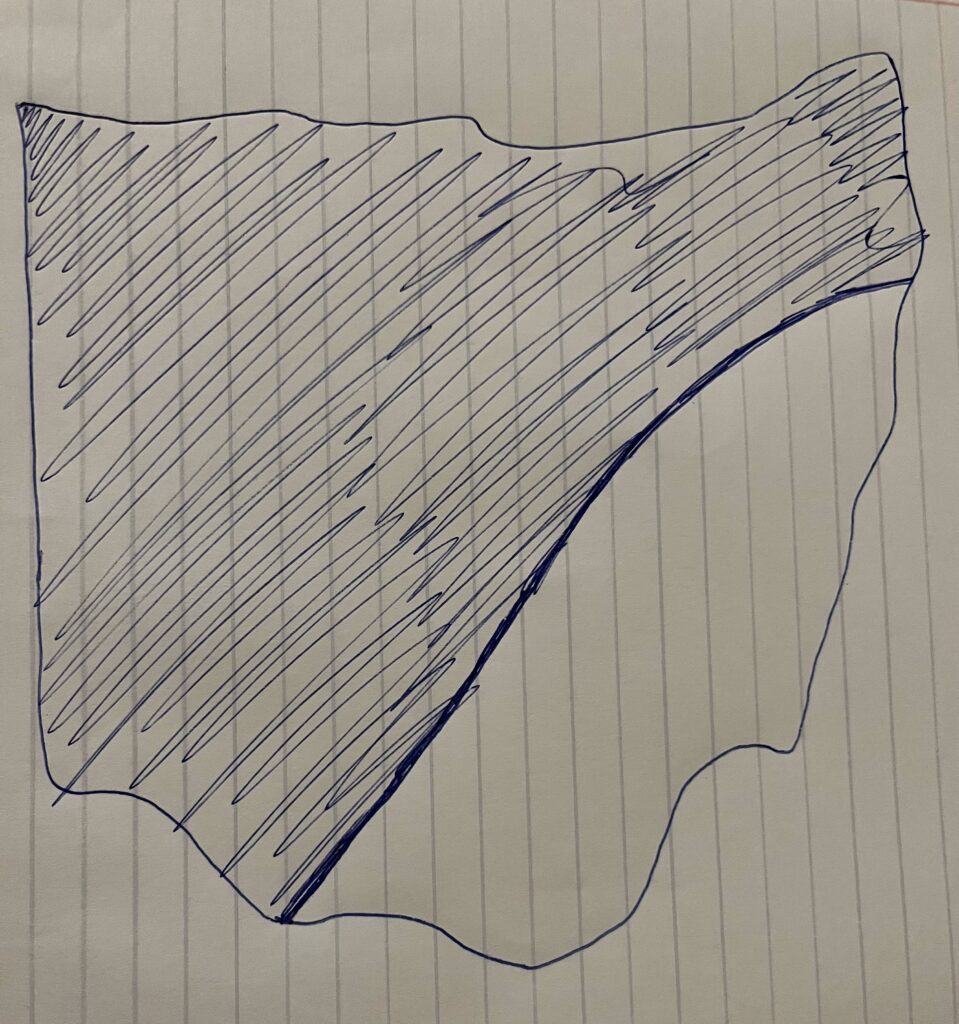
Glacial till is a term describing the process of deposition of minerals from melting glaciers, covering the land it covered in a blanket of sand, silt, and clay. Areas of western Ohio are rich in lime and clay where glaciers were more prominent, with very little in eastern Ohio. The substrate for plants in this western region is often limy, clayey till, which produces a more basic, generally water-impermeable surface. Due to this, water doesn’t sink into the ground as easily and creates low aeration in wet periods, although nutrient abundant. In eastern Ohio, the more acidic sandstone bedrock more easily drains water through, although the underlying shale (which is impermeable) causes the water to run off.
Some trees and shrubs that are generally limited in distribution to limestone or limey substrates such as the islands of Lake Erie include redbud (Cercis canadensis), hackberry (Celtis occidentalis), blue ash (Fraxinus quadrangulata), chinquapin oak (Quercus muehlenbergii), and fragrant sumac (Rhus aromatica). Some that are more limited to the high-lime, clay-rich substrate of western Ohio include sugar maple (Acer saccharum), beech (Fagus grandifolia), red oak (Quercus borealis), shagbark hickory (Carya ovata), and white oak (Quercus alba). Finally, some trees and bushes limited to sandstone hill areas of eastern Ohio include chestnut oak (Quercus montana), sourwood (Oxydendrum arboreum), scrub pine (Pinus virginiana), pitch pine (Pinus rigida), and hemlock (Tsuga canadensis).
Sweet buckeye is a species that is not found anywhere within the glacial boundary of western Ohio and is likely due to the plants having problems repopulating in the clay and high-lime tills of the once glaciated areas. On the other hand, hemlock is a tree that is found in both non-glaciated areas as well as more northern areas past the glacial boundary. This appears to occur due to the plants requiring a continuously moist and cool environment, which is often found in the sandstone valleys of eastern Ohio as well as deep valleys in the north containing some till. Rhododendrons are found in areas of Ohio south of the glacial boundary, but only in areas that seem to correspond to where the Taeys River once flowed.
For this week’s trip to Battelle Darby Metro Park, we documented a few of the limestone-loving plants that are found in the eastern portion of Ohio:
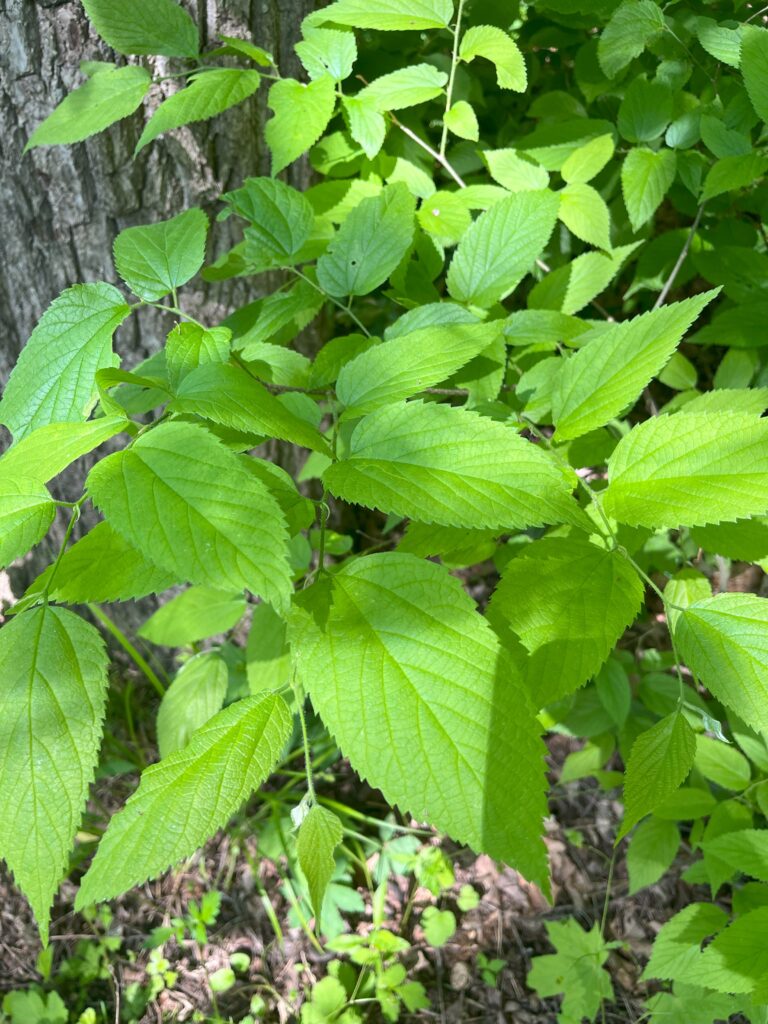
Common name: American Hackberry
Scientific name: Celtis occidentalis
The American hackberry has opposite simple leaves that are toothed and mostly uneven at the base. It produces small red fruits called sugarberries from October to November, which are eaten by many wild birds.
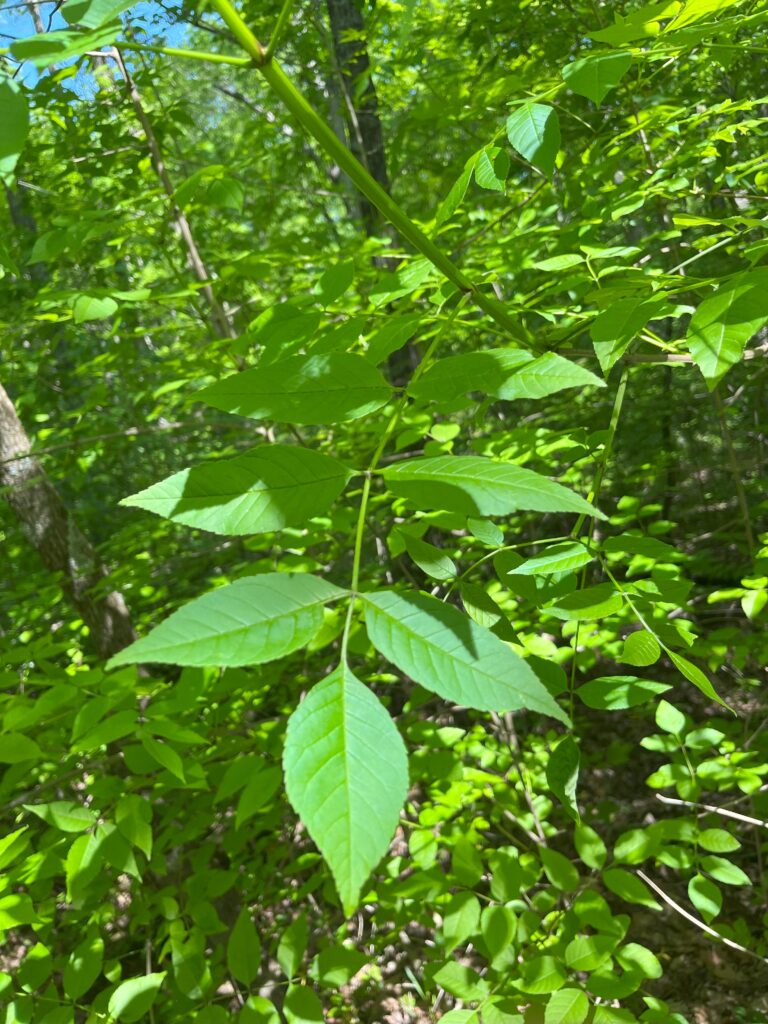
Common name: Blue ash
Scientific name: Fraxinus quadrangulata
The blue ash has opposite compound leaves, with the leaflets arranged pinnately. The leaflets are toothed and the stems are typically square-shaped in cross-section. Although still vulnerable to the emerald ash borer, this tree seems to be less affected than other ash species.
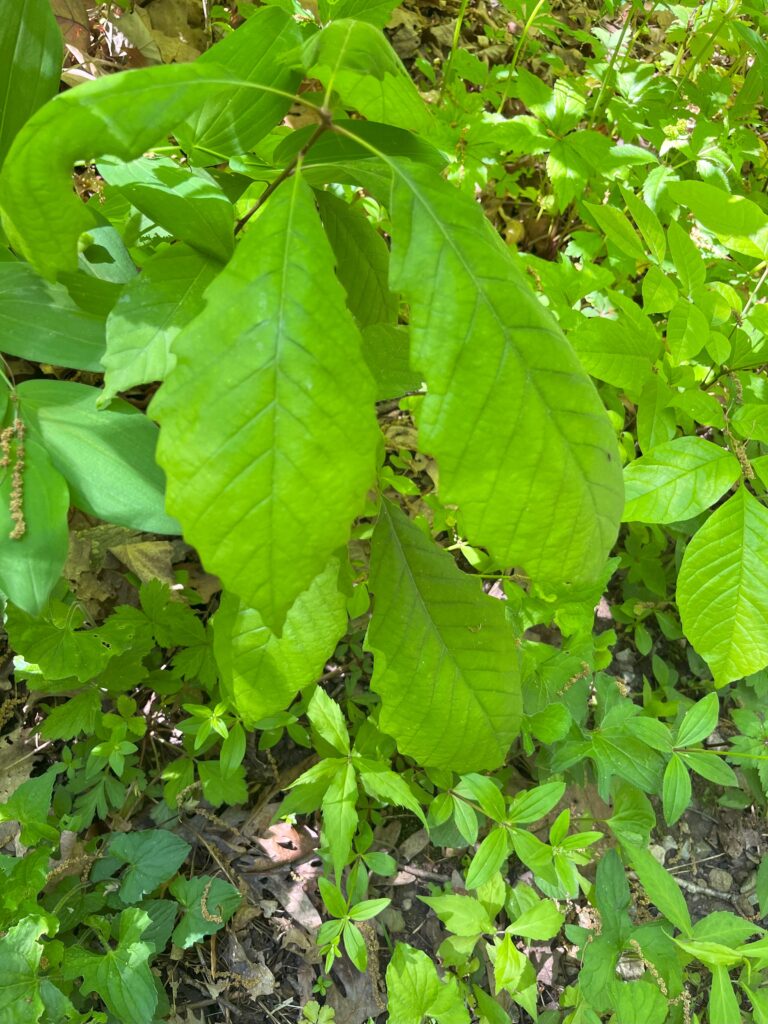
Common name: Chinquapin oak
Scientific name: Quercus muehlenbergii
This species of oak has opposite simple leaves that are coarsely toothed. They produce somewhat narrow acorns with a pointed end of the nut which are eaten by deer, squirrels, and other wildlife.
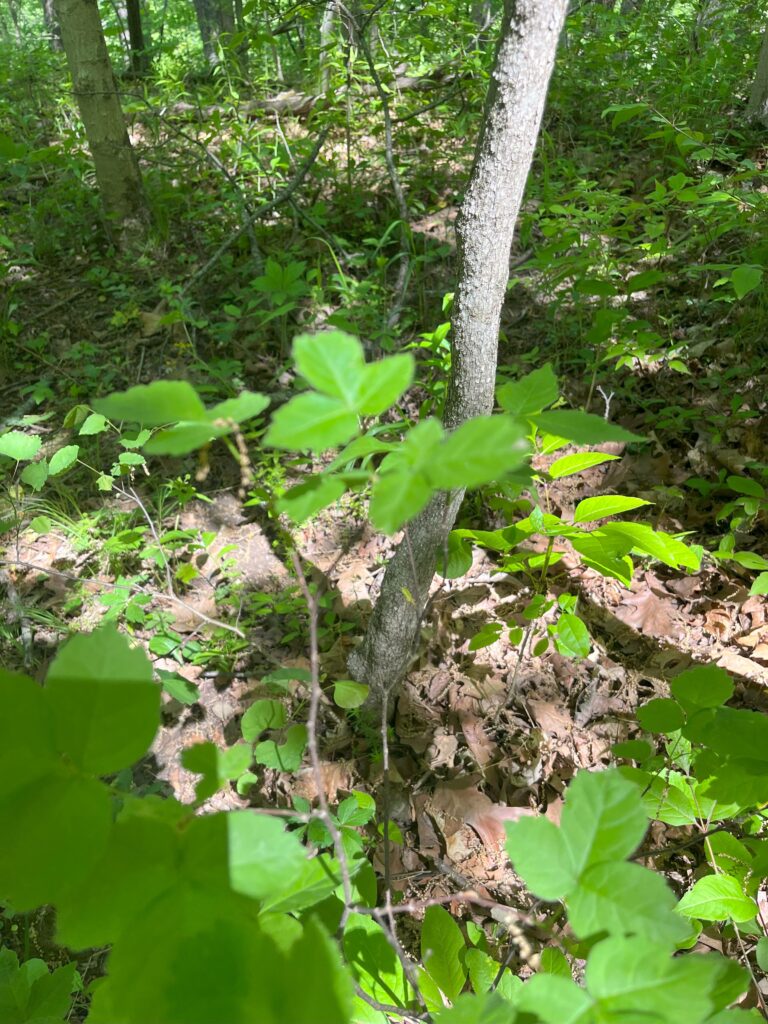
Common name: Fragrant sumac
Scientific name: Rhus aromatica
This low-growing shrub has 3-parted alternate compound leaves that when crushed produce a pleasant aromatic smell. The small green flowers of this plant are primarily pollinated by bees in the summer during their bloom.
We also discovered 2 invasive species on our trip that are not native to the local habitat or wildlife:
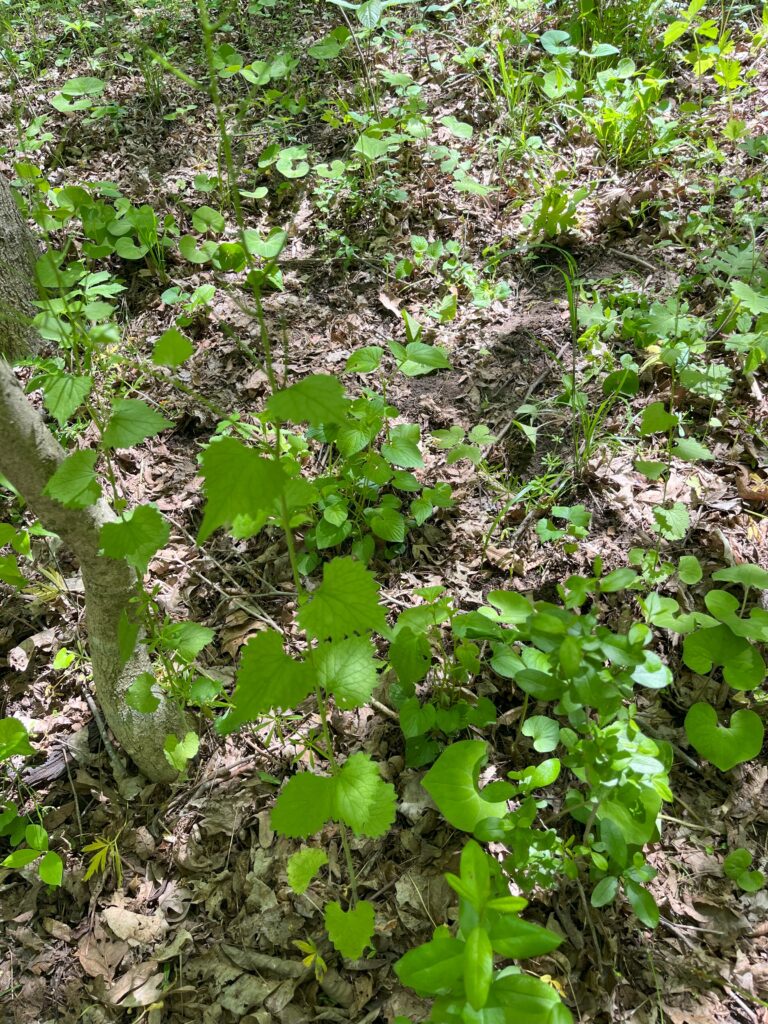
Common name: Garlic Mustard
Scientific name: Alliaria petiolata
This species of mustard is native to Europe and Asia but has become an invasive species in the US. Garlic mustard typically grows earlier in the season than other plants and outcompetes them for sunlight and nutrients.

Common name: Amur honeysuckle
Scientific name: Lonicera maackii
Similar to garlic mustard, this species of honeysuckle is not native to Ohio and is considered invasive. This shrub typically outcompetes other foliage from sunlight and soil space, making them a threat to the biodiversity of our forests.
Finally, I was tasked with finding and identifying 2 species of viburnums:

Common name: Smooth Blackhaw
Scientific name: Viburnum prunifolium
This small shrub contains rounded, leathery, finely-toothed leaves arranged in an opposite simple configuration. They produce small black drupes which are eaten by foxes, some birds, and even humans!
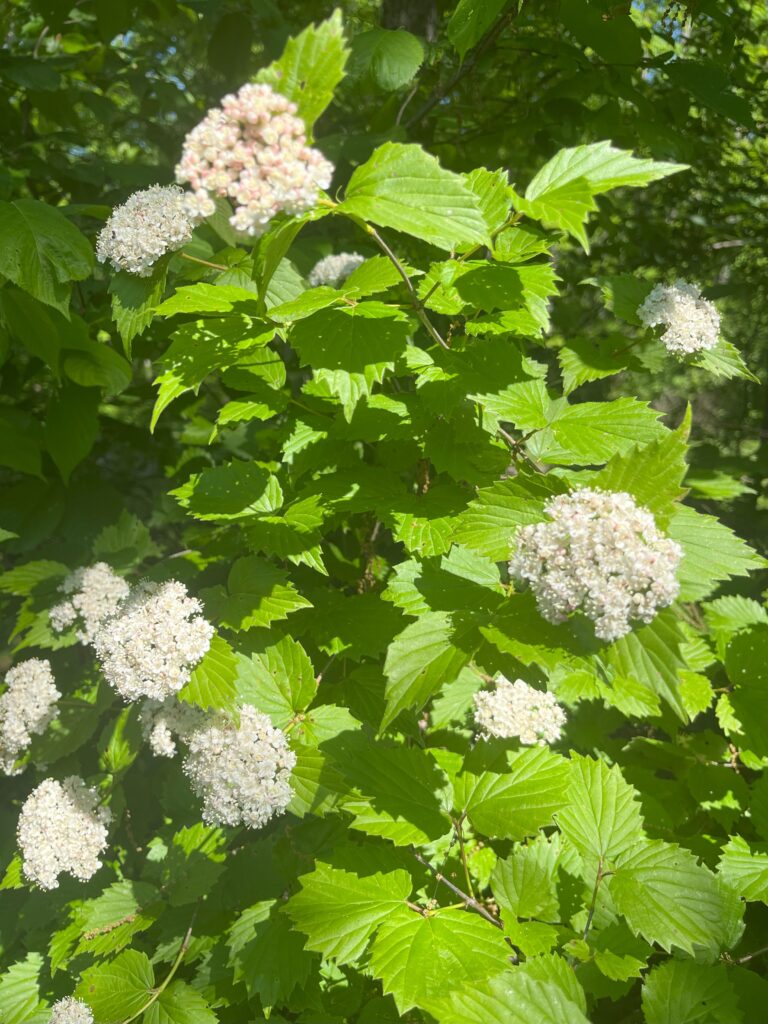
Common name: Northern Arrowwood
Scientific name: Viburnum recognitum
This lovely white-flowering viburnum also has opposite simple leaves that are coarsely toothed. The northern arrowwood produces small blackish-blue drupes that are eaten by chipmunks and other wildlife.
